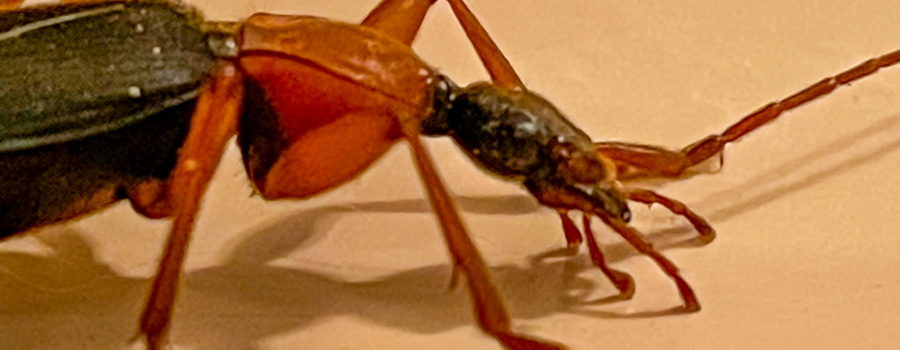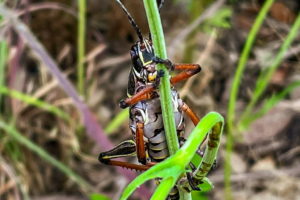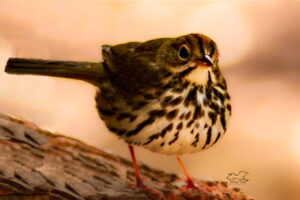Another Beautiful Insect Wandering Around in My Bathroom!

We all get insects in our homes, and especially out here in the country, that’s not such an uncommon occurrence. I find them in other places too sometimes, but the most common place for them is the bathroom. I’m not sure exactly why, but I suspect that it has to do with all the plumbing coming in and out. Anyway, last week I found a very interesting looking beetle in my garden tub. My cats had torn up a couple of paper towels in the tub (destructive little devils). When I started to clean them up, the beetle came crawling out. It did not seem overly happy that I had disturbed it as it ran around the tub looking for someplace else to hide.

But that did give me the chance to get some photos of it. It was a decent sized beetle, but not huge, and was very pretty in it’s coloration, so it did make a nice subject. I wasn’t sure what kind of beetle it was, so as is always my rule I didn’t touch it, just photographed it. Then I scooped it up in a bowl and took it outside. I had hoped to get a few photos outside, too, but as soon as I released it, it dove under some of the fallen oak leaves on the porch and disappeared.

The bright coloration of the beetle made it pretty easy to identify as a false bombardier beetle. The false bombardier beetle and it’s cousin, the bombardier beetle are ground beetles that are mostly nocturnal, carnivorous beetles that live in fallen leaves and ground clutter. The most common place to find them (besides in bathrooms) is under fallen trees and limbs. They tend to be long and thin bodied with long legs that allow them to be pretty speedy. Their speed allows them to hunt other insects (mainly caterpillars), and to escape predators.

The bombardier and false bombardier beetles have an added defense, though. They have glands on their abdomens that secrete some rather nasty chemicals. The bombardier beetle secretes some very nasty stuff that can burn and stain human skin and definitely cause some discomfort. The false bombardier is a little less noxious, and produces a concentrated formic acid (the same chemical that ants have). It tends not to burn unless the skin is broken, but it does have an unpleasant scent. The scent alone is enough to deter most predators, apparently. I’m pleased to say that I must not have disturbed my little beetle friend too much, because I never got a whiff of it’s spray (for which I’m thankful!).

So before we get near one of these guys, how can we tell them apart? The false bombardier beetle is quite a bit larger than the bombardier beetle (nearly double in length), but when they are running around in and out of the leaves and ground debris, sometimes size is difficult to judge. A better way to tell the difference is that the false bombardier has a black head while the bombardier has a red head. Both should really probably be touch me nots, but fortunately most folks don’t encounter these beetles very often because they prefer to hide or run off when disturbed. Have you ever seen one of these beetles? If so, where did you find it?




Recent Comments